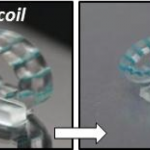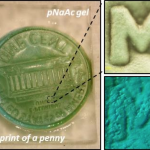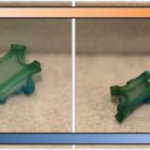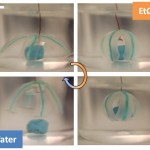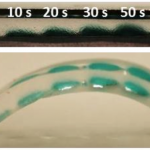Soft robotics is a quickly emerging field that takes a lot of inspiration from marine creatures like squids and starfish. A light-controlled hydrogel was recently developed that could be used for control of these new robotic devices, but now researchers at North Carolina State University are taking the development of soft robotic devices to a new level with electrically-charged hydrogels.
The “ionoprinting” technique, as the team has dubbed it, uses a copper electrode to inject positively-charged copper ions into a hydrogel material (a highly absorbent polymer material that is nearly 99.9 percent water). The copper ions bond with negatively charged ions n the hydrogel’s polymer network, creating a more robust and mechanically stiffer structure.
Applying an electrical current then causes the hydrogel to flex. Although electrical fields have been used to actuate hydrogel materials before, this is the first time that electromechanically active electrodes have been used to drive the motion. Also, this is the first time that the binding of ions has been used to create a more rigid hydrogel network in this way.
As well as being able to fold hydrogels significant distances within seconds, the technology allows the application of modest voltages to locally tune the mechanical properties of hydrogels to create physically-reinforcing exoskeletons. The copper ions can be injected into specific sections of the hydrogel material for more precise movement, with the resulting pattern of ions stable in water for a period of months. The more ions that are injected, the greater the hydrogel’s bending capabilities.
“We are currently planning to use this technique to develop motile, biologically compatible microdevices,” says Dr. Orlin Velev, INVISTA Professor of Chemical and Biomolecular Engineering at NC State.
This gives the technique potential in not only soft robotics, but also many other biomedical applications. Artificial muscles, enviro-intelligent sensors, actuators, biomimetic microbots, micropatterned thin films, cell scaffolds and drug-delivery are just some of the other potential applications for the technology according to the researchers.
The team’s paper is published in the journal Nature Communications.
The video below shows the ionoprinting process and hydrogels in action.
Source: North Carolina State University

